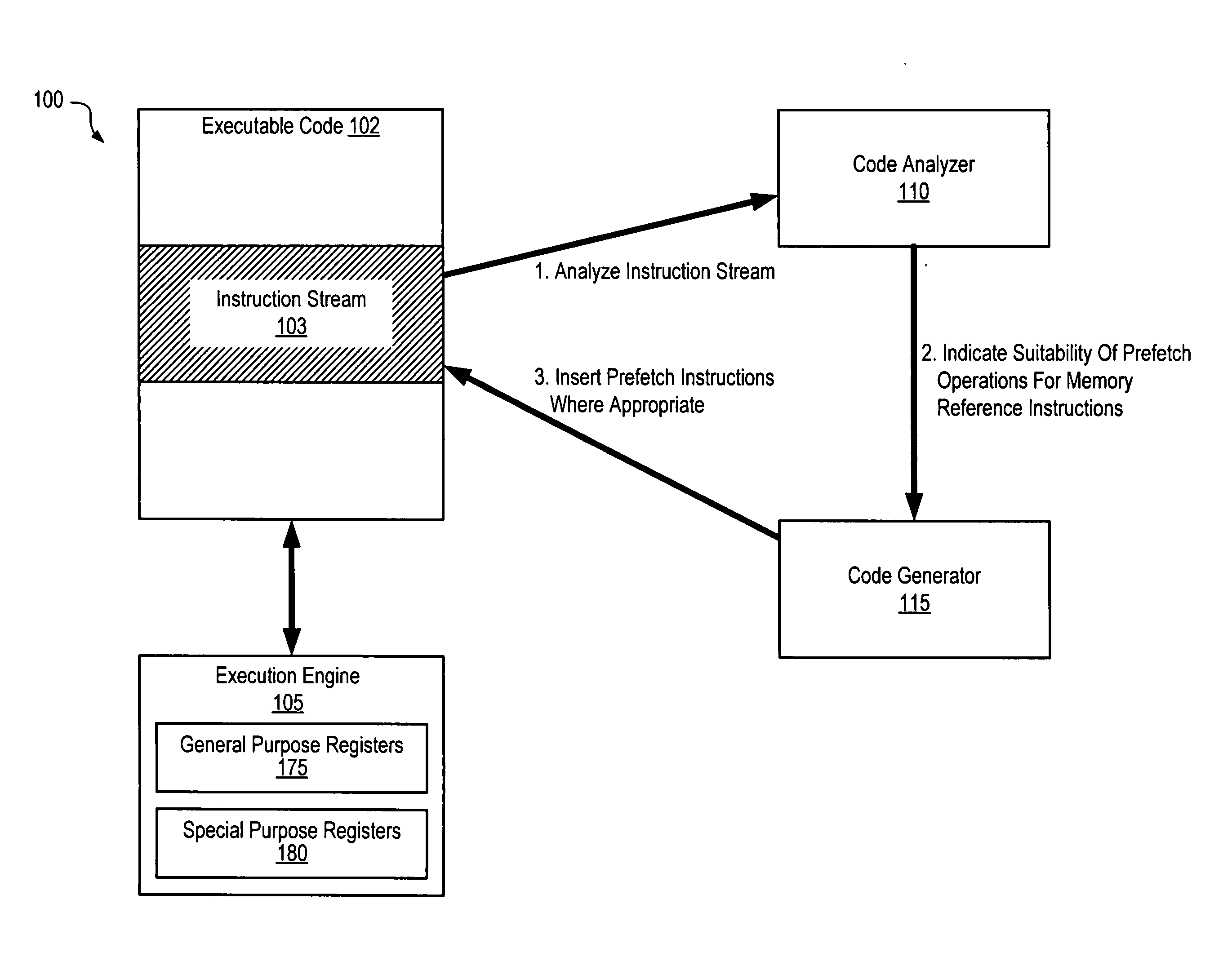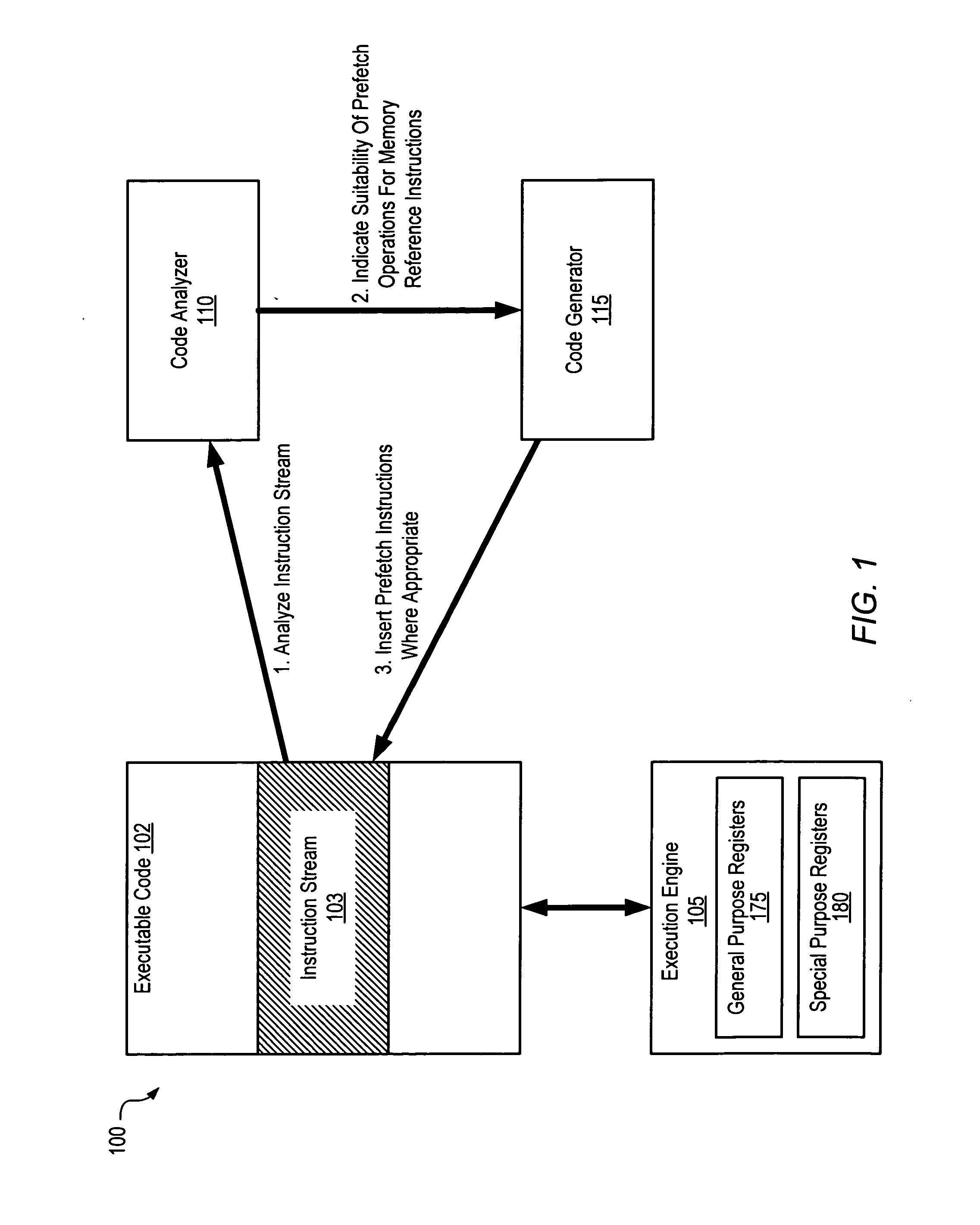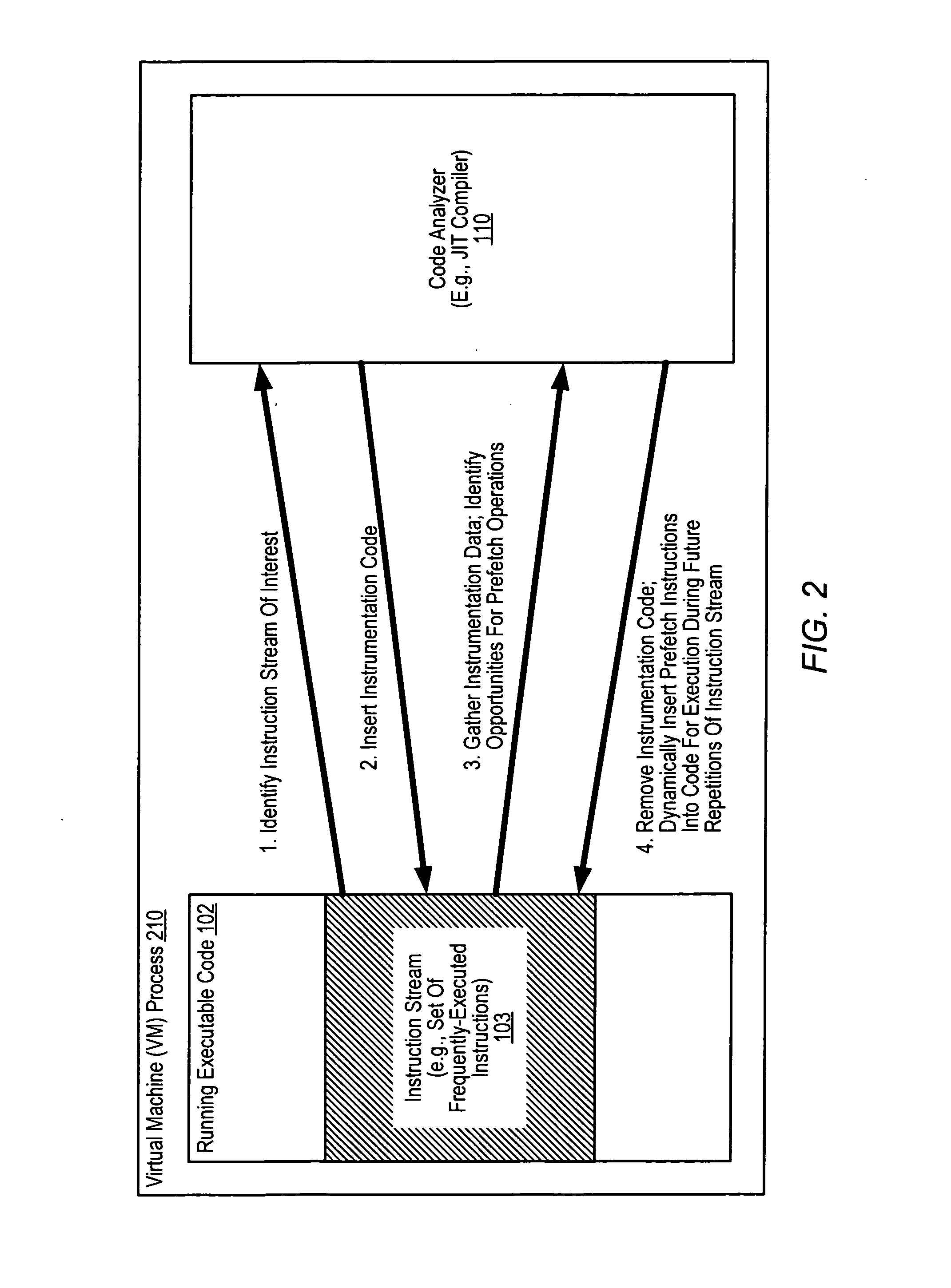Binary code instrumentation to reduce effective memory latency
a technology of effective memory latency and binary code, applied in the field of computer systems, can solve the problems of many processor cycles wasted, relative improvements in application performance, and change in processor clock rate, so as to prevent processor stalls and reduce effective memory latency
- Summary
- Abstract
- Description
- Claims
- Application Information
AI Technical Summary
Benefits of technology
Problems solved by technology
Method used
Image
Examples
Embodiment Construction
[0022]FIG. 1 is a block diagram illustrating one embodiment of a system 100. The system includes an execution engine 105, compiled executable code 102 targeted for execution at the execution engine, a code analyzer 110 and a code generator 115. In various embodiments, the execution engine 105 may comprise a hardware processor, a simulator of a processor or computer system, or an emulator of a processor or system. The executable code 102 may comprise the instructions for one or more applications and / or the instructions for infrastructure software such as an operating system, an application server or other middleware, etc. The code analyzer 110 may be configured to analyze at least a subset of the executable code 102 (as indicated by the arrow labeled “1” in FIG. 1), which may be termed an instruction stream 103 herein, for potential opportunities for prefetch operations, as described below in further detail. In one embodiment, for example, the execution engine may include a set of re...
PUM
 Login to View More
Login to View More Abstract
Description
Claims
Application Information
 Login to View More
Login to View More - R&D
- Intellectual Property
- Life Sciences
- Materials
- Tech Scout
- Unparalleled Data Quality
- Higher Quality Content
- 60% Fewer Hallucinations
Browse by: Latest US Patents, China's latest patents, Technical Efficacy Thesaurus, Application Domain, Technology Topic, Popular Technical Reports.
© 2025 PatSnap. All rights reserved.Legal|Privacy policy|Modern Slavery Act Transparency Statement|Sitemap|About US| Contact US: help@patsnap.com



